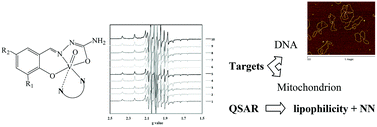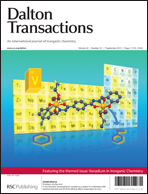Searching for prospective metal-based drugs for the treatment of Chagas disease, a new series of ten mixed-ligand oxidovanadium(IV) complexes, [VIVO(L-2H)(NN)], where L is a tridentate salicylaldehyde semicarbazone derivative (L1–L5) and NN is either 5-amine-1,10-phenanthroline (aminophen) or 5,6-epoxy-5,6-dihydro-1,10-phenanthroline (epoxyphen), were synthesized. The compounds were characterized in the solid state and in solution. EPR spectroscopy suggests that the NN ligands act as bidentate through both nitrogen donor atoms in an axial–equatorial mode. The stability of the complexes in solution was investigated by EPR and 51V-nuclear magnetic resonance spectroscopies. The complexes were evaluated in vitro for their activities against Trypanosoma cruzi (T. cruzi), the parasite responsible for the disease, and their selectivity was analyzed using J-774 murine macrophages, as a mammalian model. All the complexes are more active than both the reference drug Nifurtimox and the previously reported [VIVO(L-2H)(NN)] complexes. In general they are more active than the corresponding free NN ligands. Complexation led to highly increased selectivities towards the parasite. In addition, the lipophilicity of the compounds was determined and correlated with the observed activity in order to perform a QSAR (quantitative structure–activity relationship) study. A clear quadratic correlation is found. This study also confirms the influence of the structure of the co-ligand on the anti-T. cruzi effect. To get insight into the mechanism of action of the compounds, the changes in biochemical pathways promoted by two of the most active and most selective complexes are studied by analyzing a few of the parasite excreted metabolites by 1H NMR spectroscopy. The combined information suggests that the mitochondrion could be a target for these complexes. Furthermore, DNA was preliminarily evaluated as a potential target by using atomic force microscopy (AFM), which showed that the complexes display an ability to interact with this biomolecule.

You have access to this article
 Please wait while we load your content...
Something went wrong. Try again?
Please wait while we load your content...
Something went wrong. Try again?


 Please wait while we load your content...
Please wait while we load your content...